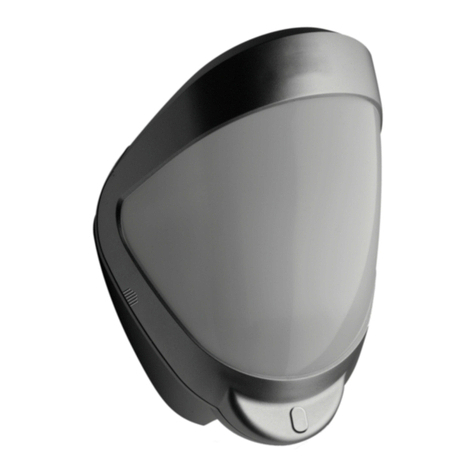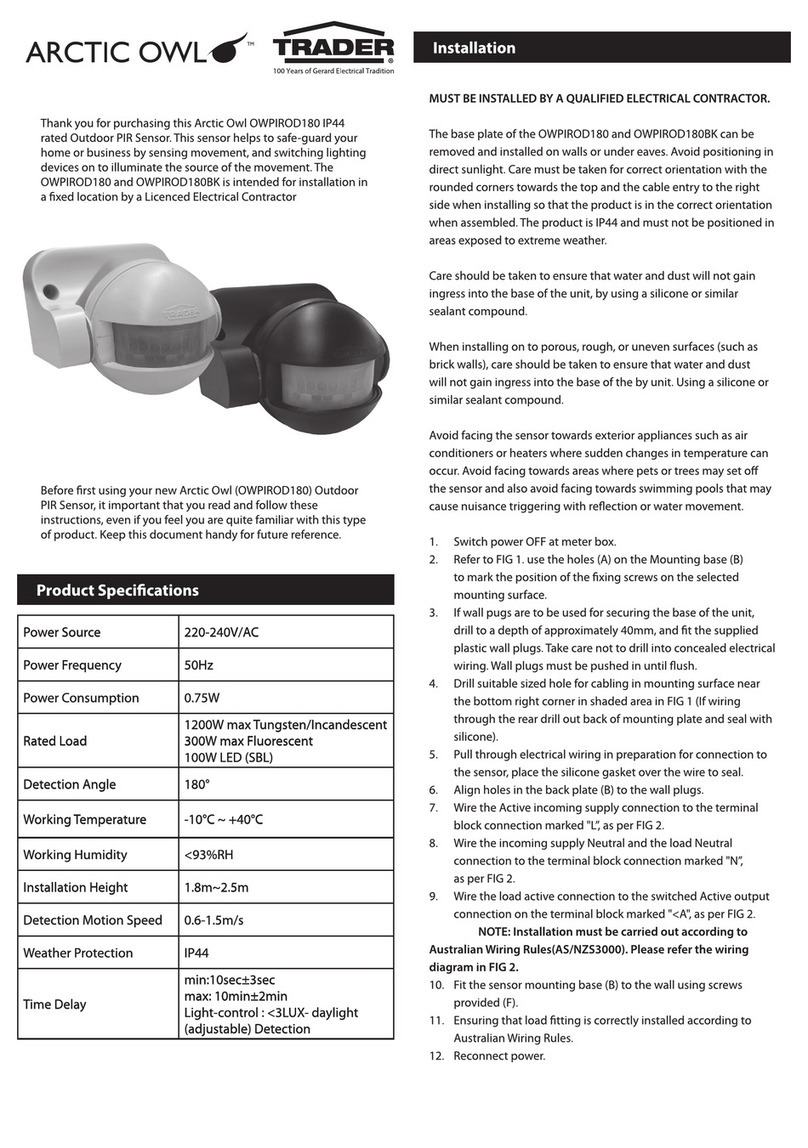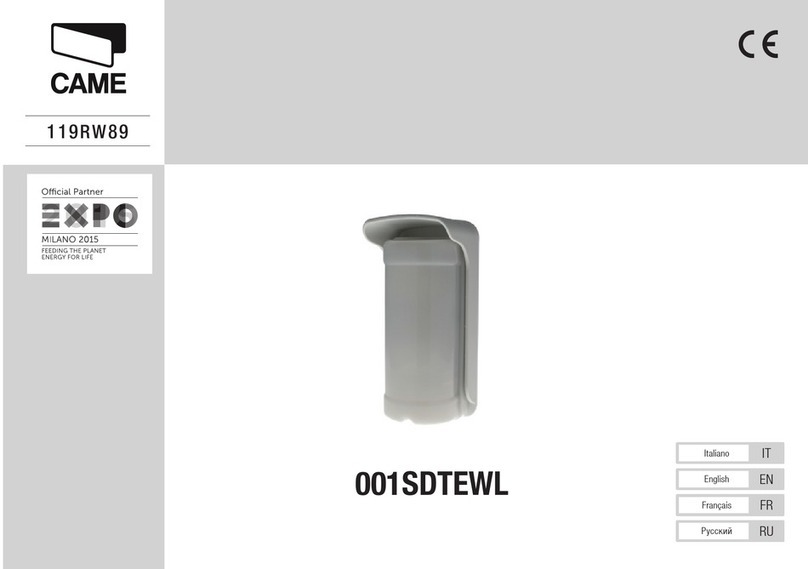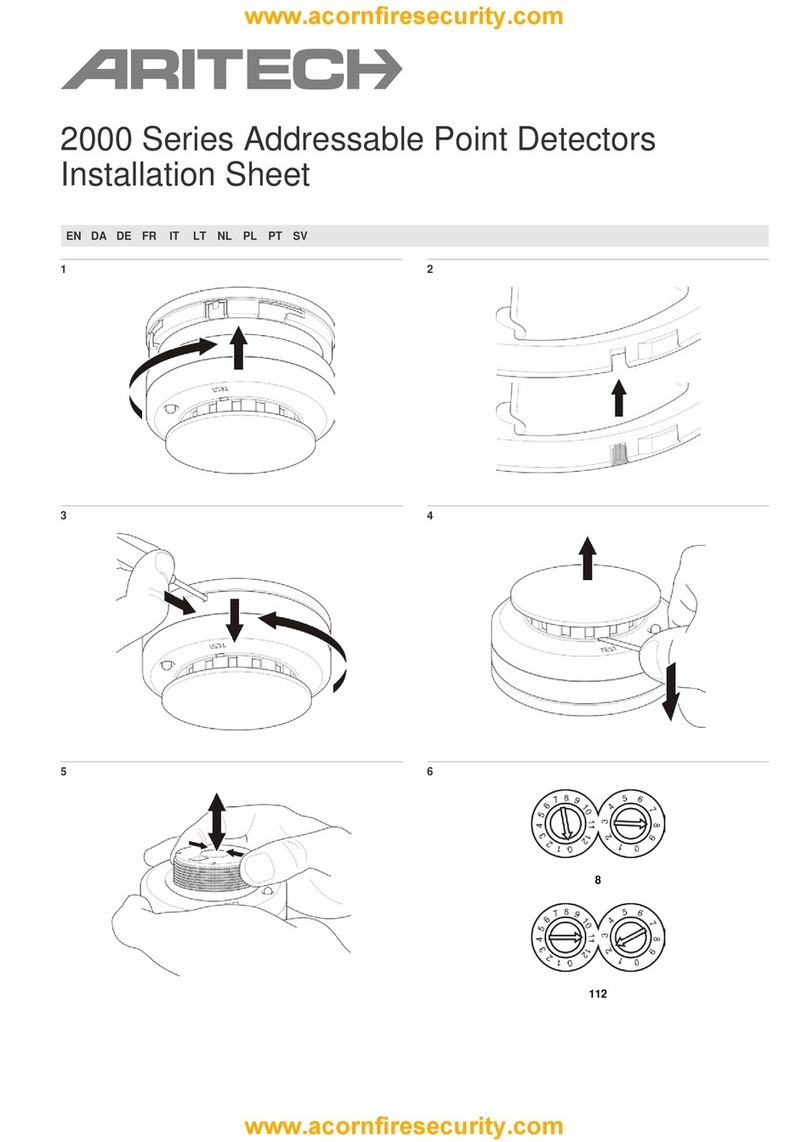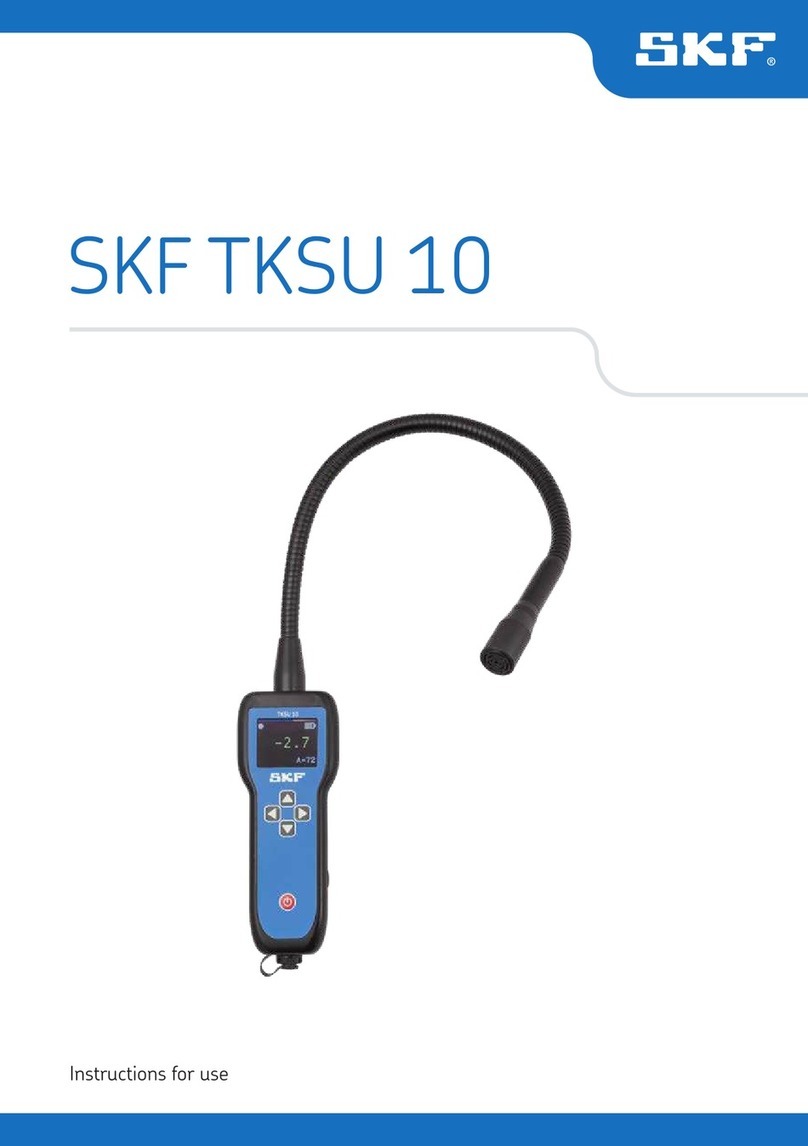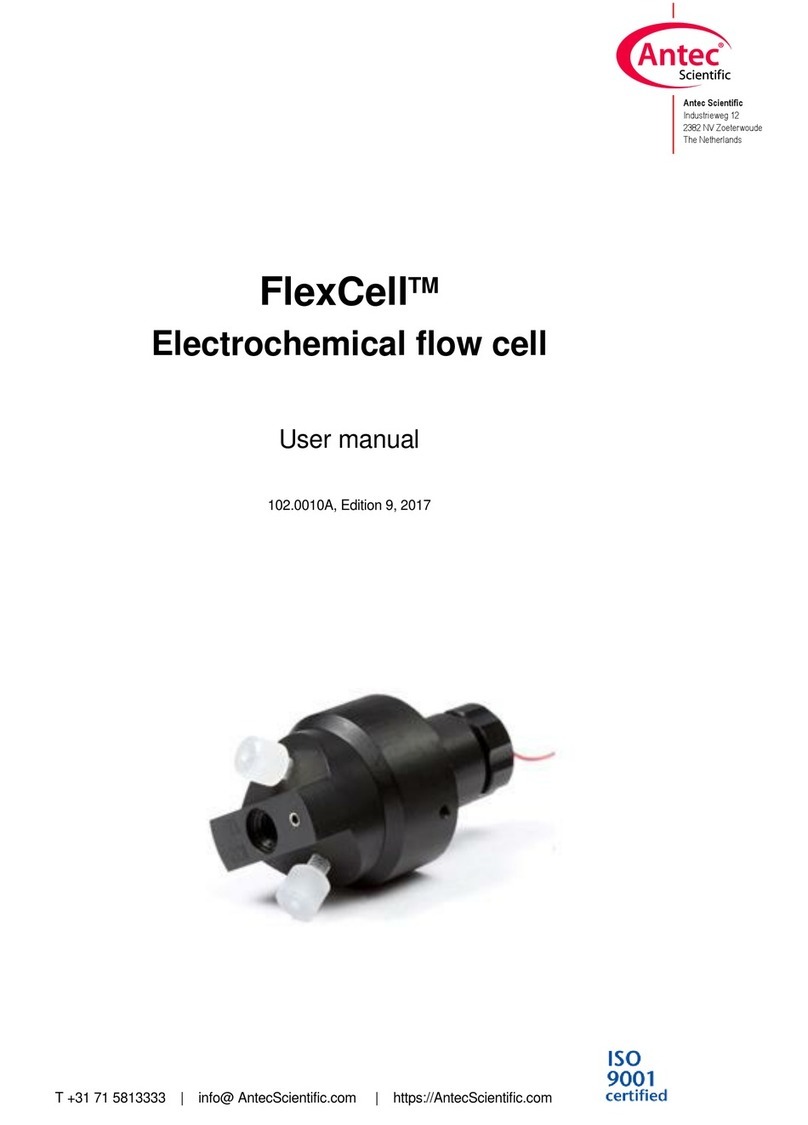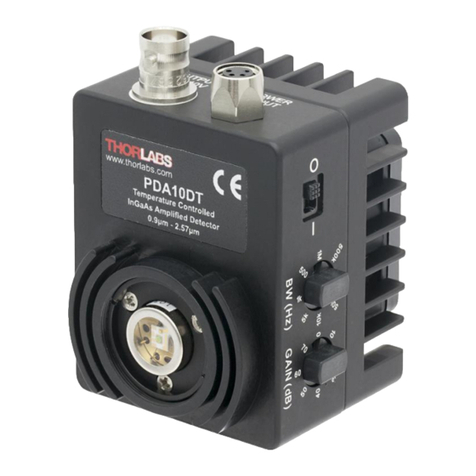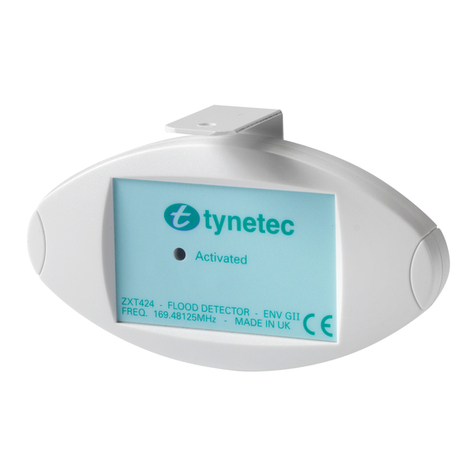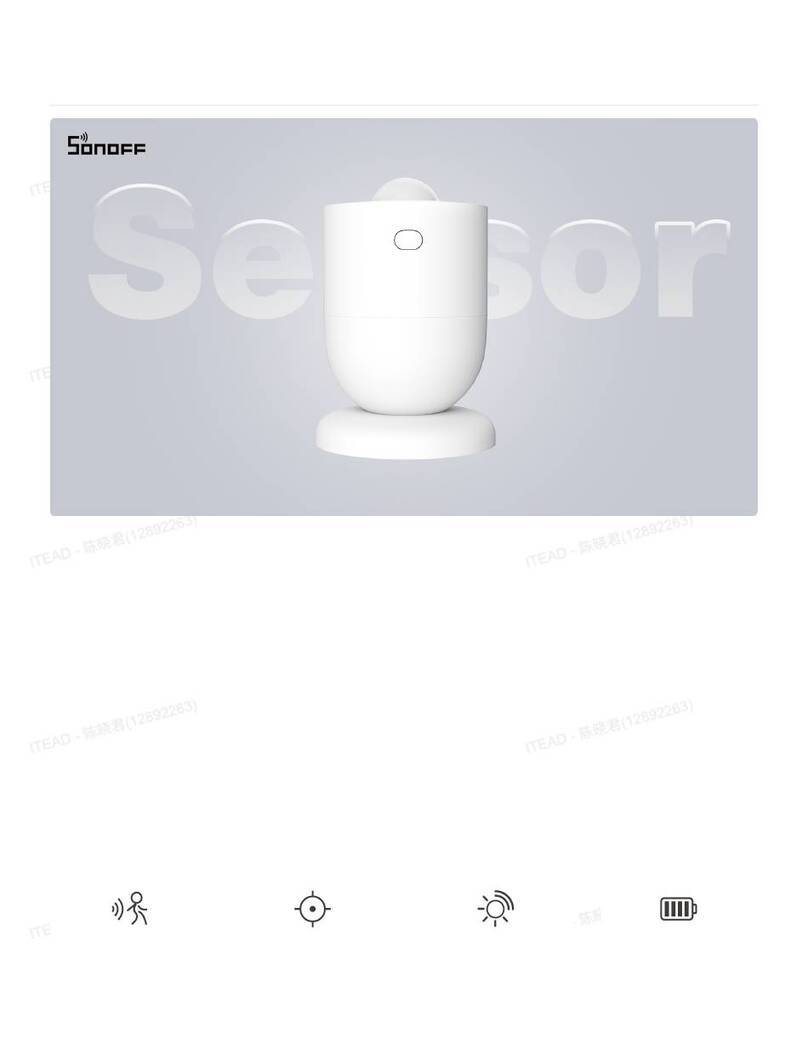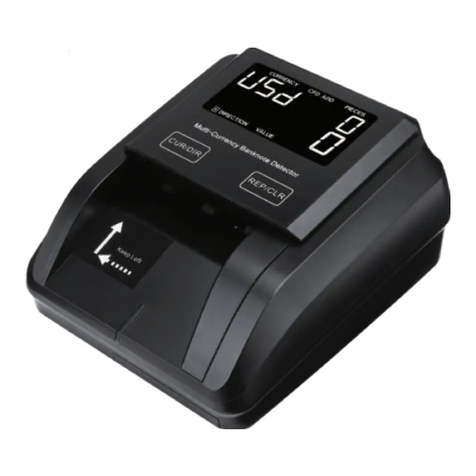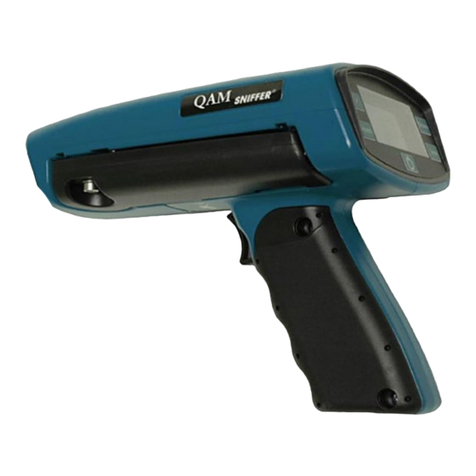NetVu FireVu Standalone User manual

FireVu Standalone Installation Manual
15/07/2021
Page PAGE1
of
NUMPAGES4
3
NetVu Ltd. www.netvu.org.uk
No 1 Thellow Heath Park, Northwich Road, Northwich, Cheshire. CW9 6JB
FireVu Detector Standalone
Installation Manual
FV/MAN/003/4
Version History
Issue Number
Date
Comments
DRAFT Version 1.0
23rd March, 2018.
Author –R S Hawes
DRAFT Version 1.01
9th August, 2018.
Author –R S Hawes
DRAFT Version 2.0
5th March, 2020
Author –P Ridgeon
DRAFT Version 3.0
6th January, 2021
Author –P Ridgeon
DRAFT Version 4.0
15th July, 2021
Relay detail updated

Page 2 of 97
Title FireVu Detector Standalone Installation Manual
NetVu Ltd. www.netvu.org.uk
No 1 Thellow Heath Park, Northwich Road, Northwich, Cheshire. CW9 6JB
Copyright Notice
Copyright © 2015 - 2021 NetVu Ltd. All rights reserved.
NetVu Ltd. copyrights this manual and the products it describes. Express permission from NetVu
Ltd. is required before any part of this manual is reproduced, transcribed or stored in any electronic
device.
This manual is intended for use by authorised representatives of NetVu Ltd. and it must not be
distributed to any unauthorised person.
This manual covers the FireVu product ranges and is effective as of 5th March 2020.
It supersedes all previous manuals and instructions.
IMPORTANT
READ CAREFULLY BEFORE USE
KEEP FOR FUTURE REFERENCE
Preamble
For the avoidance of doubt and for the purposes of this manual, “camera” and “detector” are
defined as meaning the same thing.
Feature
FireVu Multidetector
FireVu Detector
Flame Detection
✔
✔
Smoke Detection
✔
✔
Detects both indoor and outdoor
✔
✔
Dynamic Masking
✔
✔
Exclusion Masking
✔
✔
Video Management Software Included
✔
✔
Secure Alarm Transmission
✔
✔
Watchdog Function
✔
✔
Event logging
✔
✔
Internal Recording
✔
✔
Heat Detection
✔
🗶
Two built-in dry-contact outputs (allowing
stand-alone use as inputs to a fire alarm system).
✔
✔

Page 3 of 97
Title FireVu Detector Standalone Installation Manual
NetVu Ltd. www.netvu.org.uk
No 1 Thellow Heath Park, Northwich Road, Northwich, Cheshire. CW9 6JB
Contents
Version History 1
Copyright Notice 2
Preamble 2
Contents 3
Important Safeguards 6
Read Instructions 6
Power Sources 6
Servicing 6
Ventilation 6
FCC Information 6
FCC Conditions 7
CE Mark 7
Introduction 7
Background and Overview 8
FireVu Detector Features 8
Additional FireVu Multi-Detector Features 9
Quality 9
Warranty 9
Restrictions on Use (Intended User) 9
Input Voltage 10
Energy Consumption 10
Noise 10
Limitations of Liability 10
Intended Use 10
Hazards 10
Safety Notes 11
Transport and Storage 11
Installation 12
FireVu System Installation Flow Diagram 12
Before you start check the contents of the box 13
First Fix –Physical Installation of FireVu Detectors 14
Principle of Operation 14
Appropriate Applications for FireVu 14
Situations to avoid when using FireVu 15

Page 4 of 97
Title FireVu Detector Standalone Installation Manual
NetVu Ltd. www.netvu.org.uk
No 1 Thellow Heath Park, Northwich Road, Northwich, Cheshire. CW9 6JB
Environmental Considerations 16
Detector Lens Selection 16
Detector Positioning 16
Covering the “Risk Area” 16
Height 18
Angle of Detector 18
Ensuring maximum useable view 18
Avoiding problematic areas wherever possible 19
Lighting 19
Artificial lighting, including IR. 19
Other lighting 20
Background of Image when using detectors externally 20
Second Fix –Cabling and Connection of Standalone FireVu Detectors 20
Cabling Requirements 20
Wiring Block Diagram –Single Standalone FireVu Detector 21
Wiring Block Diagram –Up to Four Standalone FireVu Detectors 22
Remote access 23
Individual FireVu Detector Connections and Wiring 24
Relay Outputs and Alarm Inputs 25
Configuring Relay Outputs #2 and #3 25
Relay #1 –Alarm/Fault Relay 26
Post-Wiring and connection tasks 28
Configuration 29
Basic Configuration / Pre-Commissioning 29
Initial Settings 29
Viewing Detector Video Images 34
Pre-Commissioning Checklist 36
Remote Commissioning and System Sign-Off 37
On-Site Smoke Testing 37
Equipment Needed 37
Process 38
On-Site Flame/Thermal Testing 43
Using Telnet to Simulate Smoke/Flame/Thermal Detection 43
Observing Smoke/Flame/Thermal detections using Enterprise Observer 46
Advanced Configuration 47
System Web-pages 48
System –Attributes Page 49
Attributes 50

Page 5 of 97
Title FireVu Detector Standalone Installation Manual
NetVu Ltd. www.netvu.org.uk
No 1 Thellow Heath Park, Northwich Road, Northwich, Cheshire. CW9 6JB
Status Page 51
Upload Page 53
Time and Date 54
User Accounts 55
Maintain 56
Features 57
Camera Web-pages 58
Camera Setup Web-page 59
Record Settings Web-pages 59
Video Storage Web-page 60
Alarm Web-pages 60
Alarm –Expression Wizard Page 61
Alarm –Expressions Editor page 63
Alarm –Activity page 64
Alarm –VMD Setup page 66
Alarm –Schedule page 67
FireVu Dashboard Web-pages 68
Parameters Web-page 68
VSD Setup and Pre-Processor Web-pages 68
Flame Web-page 68
Thermopile Web-page 70
Thermal Setup Web-page 71
Fault Warning Web-page 72
Regions Web-page 75
Regions Web-page 77
Exclusions Web-page 78
Frame Analysis Web-page 79
Frame Analysis Web-page 81
Network Web-pages 82
Setup Web-page 83
Email Web-page 84
Multicast Web-page 86
Firewall Web-page 87
ARC Configuration Web-page 87
Profile Setup Web-page 89
Live Viewer Page 90
Fault Finding, Maintenance and Support 90
Fault Finding 90

Page 6 of 97
Title FireVu Detector Standalone Installation Manual
NetVu Ltd. www.netvu.org.uk
No 1 Thellow Heath Park, Northwich Road, Northwich, Cheshire. CW9 6JB
Detector cannot be found or viewed 90
Maintenance 91
Accessories, Consumables and Spare Parts 92
Safe disposal When Expired 93
Other Related Documents 94
Glossary 95
Important Safeguards
Read Instructions
All the safety and operating instructions should be read before the unit is operated.
Power Sources
This unit should be operated only from the type of power source indicated on the manufacturer’s
label.
Servicing
Do not attempt to service this unit yourself as opening or removing covers may expose you to
dangerous voltage or other hazards.
Refer all servicing to qualified service personnel.
Ventilation
Ensure unit is properly ventilated to protect from overheating.
All the safety and operating instructions should be read before the unit is operated.
To prevent fire or shock hazard, do not expose this equipment to rain or moisture. The lightning
flash with arrowhead symbol within an equilateral triangle is intended to alert the user of this
equipment that there are dangerous voltages within the enclosure which may be of sufficient
magnitude to constitute a risk of electric shock.
FCC Information
(USA and Canadian Models Only)
This equipment has been tested and found to comply with the limits for a Class B digital device,
pursuant to part 15 of the FCC rules. These limits are designed to provide reasonable protection

Page 7 of 97
Title FireVu Detector Standalone Installation Manual
NetVu Ltd. www.netvu.org.uk
No 1 Thellow Heath Park, Northwich Road, Northwich, Cheshire. CW9 6JB
against harmful interference when the equipment is operated in a commercial environment. This
equipment generates, uses, and can radiate radio frequency energy and, if not installed and used in
accordance with the instruction manual, may cause harmful interference to radio communications.
Operation of this equipment in a residential area is likely to cause harmful interference in which
case the user will be required to correct the interference at their own expense.
FCC Conditions
(USA and Canadian Models Only)
This device complies with part 15 of the FCC rules. Operation is subject to the following two
conditions:
1. This device may not cause harmful interference
2. This device must accept any interference received, including interference that may cause
undesired operation.
CE Mark
This product and –if applicable –the supplied accessories too are marked with “CE” and comply
therefore with the applicable harmonized European standards listed under the EMC directive
2014/30/EU.
This 2012/19/EU (WEEE Directive): Products marked with this symbol cannot be disposed of as
unsorted municipal waste in the European Union. For proper recycling, return this product to your
local supplier upon the purchase of new equipment, or dispose of it at designated collection
points.
Introduction
FireVu from NetVu Ltd, innovators in Video Smoke Detection (VSD), is an advanced embedded VSD
server.
FireVu overcomes detection challenges such as smoke stratification, varying air flow and
contaminated environments. FireVu “sees” the source of smoke or flames or both, identifying them
anywhere within its field of view at any height or direction of flow.
“At source detection” is faster than other forms of detection as there is no need to wait for the
smoke to reach the detector. It works by analysing the video information it generates within the
FireVu processing system where extensive algorithms are used to analyse movement. The system
will alarm should the motion patterns be recognised as smoke or flames, or both. Each FireVu
detector can simultaneously identify smoke using up to 16 separate detection zones per detector.

Page 8 of 97
Title FireVu Detector Standalone Installation Manual
NetVu Ltd. www.netvu.org.uk
No 1 Thellow Heath Park, Northwich Road, Northwich, Cheshire. CW9 6JB
The FireVu Multi-Detector provides all the same capabilities as the other FireVu detectors with
regards to visual fire detection and also has the ability to detect the presence of heat within the
detector’s field of view by means of its in-built thermopile sensor.
In addition to the normal visual images the FireVu Multi-Detector produces a thermal image which
over-laid onto the visual image, the system’s sophisticated software then determines where in the
visual image any heat signatures exist. An absolute threshold for temperature detection can be set
for various areas within the detector’s field of view, which is able to detect temperatures from -30°C
to +300°C.
The thermal detection capabilities can be configured to be used in one of two ways:
●As a Double-Knock solution whereby the detector needs to see both a visual indication of
fire and a heat signature in the same area of the detectors field of view.
●As a stand-alone method of generating an alarm based on an item within the detectors
field of view reaching or exceeding a predetermined absolute temperature threshold. This
can be implemented to detect fire or as a means of process monitoring.
Background and Overview
The processing is completely self-contained within the detector and drives the sensor directly by a
sophisticated sequence of controlled exposures. This allows a direct correlation of Black Body
colours and intensities to reliably determine the presence of a flame.
The Multi-Detector adds a thermal sensing array, providing for sensor determination of absolute
temperature in 0.1 degree Celsius increments for identifying hot areas within an image, for either
an independent thermal threshold, or as further validation of a Flame or Smoke source to qualify
against a maximum threshold.
FireVu Detector Features
FireVu is equipped with an array of valuable features designed to provide the End User with a
secure system of unrivalled performance.
●Custom embedded Smoke and Flame detection algorithms.
●Visual confirmation of any alarm.
●Integrated Camera Recording and full enterprise video server within the detector.
●Camera recording up to 4CIF resolution, 540TVL, 25pps.
●Multi-Mode Recording - Dynamically-switchable resolution, record-rate and compression,
(MPEG4/JPEG).
●Transmission of multiple, simultaneous video streams in MPEG-4 and JPEG format enables
multiple users to view video streams at the settings they require.
●Easy remote configuration Web-pages.
●Internal video storage in each detector.
●Up to 16 configurable detection zones.

Page 9 of 97
Title FireVu Detector Standalone Installation Manual
NetVu Ltd. www.netvu.org.uk
No 1 Thellow Heath Park, Northwich Road, Northwich, Cheshire. CW9 6JB
●Evidential quality event recording.
●Live and playback viewing locally and over Ethernet.
●Easy to use on-screen, colour coded “soft-key” menu options.
●Meets BS 5839 part 1 requirements.
●Colour IP Camera with excellent low light sensitivity.
●0.3 lux F1.2 40 IRE.
●Power over Ethernet (PoE), or PoE/12VDC/24VAC.
●Local analogue test monitor output for use when positioning and adjusting the camera’s
field of view and focus.
●Alarm reporting using four on-board solid-state relays and/or monitored loop operation.
Additional FireVu Multi-Detector Features
●Built in Thermopile sensor providing absolute temperature measurements.
Quality
NetVu Limited’s manufacturing arm (Dedicated Micros, Malta) has ISO 9001 certification and all
products are manufactured and tested in accordance with a comprehensive quality system.
Warranty
FireVu product comes with a one-year warranty. FireVu is sold under a return-to-base upon any
failure agreement. Any returned product must be returned in the original packaging in accordance
with NetVu Limited’s return process, under which all returns are first approved, a materials returns
reference number issued, and then the equipment can be returned to NetVu Limited’s service
facility with the returns number clearly displayed.
Restrictions on Use (Intended User)
The equipment is intended for use in non-domestic premises by suitably trained and qualified
persons of at least 16 years of age. It should be protected from extremes of heat, cold, humidity,
ultraviolet, infrared and all forms of ionising radiation. It should be used in a well-ventilated area
and if used in a hostile environment, protected from the ingress of dust and liquids by a suitable
ventilated enclosure. With the exception of FireVu detectors, all FireVu equipment is for indoor use
only.
Minimum Operating Temperature: -10°C (14°F)
Maximum Operating Temperature: 50°C (122°F) FireVu Detectors
Operating Humidity: 20% to 90% Relative Humidity (Non condensing)
Minimum Lighting: 20lux
Maximum Lighting: 150,000lux

Page 10 of 97
Title FireVu Detector Standalone Installation Manual
NetVu Ltd. www.netvu.org.uk
No 1 Thellow Heath Park, Northwich Road, Northwich, Cheshire. CW9 6JB
Input Voltage
FireVu Detector and Multi-Detector: 12-15VDC or PoE Class 3.
Energy Consumption
Multi-Detector: 8W
Noise
FireVu equipment are solid state devices and should not emit any audible noise under normal
operating conditions.
Limitations of Liability
FireVu must be installed and configured in accordance with NetVu Limited’s instructions. NetVu
Ltd. cannot be held liable for any incidental or consequential damages resulting from loss of
property or damages due to misuse of NetVu Ltd. products.
Errors and omissions excepted (E&OE). NetVu Limited assumes no responsibility for errors or
omissions within this document.
NetVu Ltd. reserve the right to make product improvements at any time.
If in any doubt whatsoever, please contact NetVu Limited to confirm that your understanding is
correct.
Intended Use
The FireVu detectors can be deployed as a stand-alone visual detector or as part of a FireVu
Internet Protocol (IP) system.
It is NOT intended that the FireVu detector itself be utilised to handle the alarm outputs and
perform the final annunciation within a Fire Detection System. This function should be performed
by the Fire Alarm Control Panel (FACP).
NOTE: It is extremely important that the F-stop Iris adjustment is not altered from the “as supplied”
setting, as this is part of the calibration for Flame Detection.
NOTE: It is also important that the correct lens is selected on each detector, under “ FireVu
Dashboard”, “Flame”.
The requirements for smoke, flame or thermal event detection often conflict with security
requirements for a CCTV camera. Consequently, NetVu Ltd. advise against detectors being used
for a dual security and Visual Smoke Detection (VSD) purpose.
This equipment MUST NOT be modified in any way, shape or form except by a trained NetVu Ltd.
Engineer or agent with express permission from NetVu Ltd.
Hazards
Electric Shock. FireVu units are low voltage equipment. However, they may be supplied with

Page 11 of 97
Title FireVu Detector Standalone Installation Manual
NetVu Ltd. www.netvu.org.uk
No 1 Thellow Heath Park, Northwich Road, Northwich, Cheshire. CW9 6JB
power supplies which if misused or incorrectly installed could present an electric shock hazard.
FireVu equipment must only be used with the power supply provided and the power supply must
be installed in accordance with local regulations by suitably qualified persons.
Manual handling. FireVu equipment is robustly constructed and can be heavier than it looks.
Suitable precautions MUST be taken when handling them to prevent personal injury. They must
only be installed in accordance with local regulations by suitably trained and qualified persons.
Safety Notes
With the exception of FireVu detectors, all FireVu equipment is for indoor use only. FireVu
equipment is robustly constructed and can be heavier than it looks. Suitable precautions MUST be
taken when handling them to prevent personal injury. They must only be installed in accordance
with local regulations by suitably trained and qualified persons.
Note: Before deciding upon a position for Video Smoke Detection detectors the potential fire
hazards must first be identified. The client or consultant will need to perform the risk assessment
and identify the nature and area of risk within the detector field of view.
A FireVu installation is intended for use as an automated early warning system and not as a primary
protection method, except where no other detection method is practicable. An in-depth
knowledge of the monitored area and fire risk is required to use FireVu effectively.
FireVu should not be used as a direct means of activating any fire suppression equipment. NetVu
Limited require that there must be human visual verification before any suppression equipment is
activated. The operator must have the ability to quickly raise the alarm, initiate the fire evacuation
procedure and activate fire suppression equipment as appropriate. Consequently, it is strongly
recommended that a break-glass call point be sited within easy reach of the VSD monitor operator.
Transport and Storage
NetVu products are securely packed, using appropriate materials which are recyclable where
reasonably practicable. However, the products contain delicate electronic equipment and should
be handled with due care and attention.
Ensure that all cartons or boxes are the right way up before opening them at the indicated point.
Keep the original packaging for the duration of the warranty period, in case any item should need
to be returned.
When no longer required the packaging should be reused, recycled, or disposed of in accordance
with local waste disposal arrangements and regulations.
These products must only be stored indoors, with their environment being maintained within the
limits outlined below.
Minimum Storage Temperature -10°C (14°F)
Maximum Storage Temperature 70°C (158°F)
Storage Humidity 20% to 90% Relative Humidity (Non condensing)

Page 12 of 97
Title FireVu Detector Standalone Installation Manual
NetVu Ltd. www.netvu.org.uk
No 1 Thellow Heath Park, Northwich Road, Northwich, Cheshire. CW9 6JB
Installation
Each Installer will have a specific “Scope of Work” (SoW) document issued to them by NetVu
Limited. The SoW should be consulted for the specific details pertinent to each individual
installation.
FireVu System Installation Flow Diagram

Page 13 of 97
Title FireVu Detector Standalone Installation Manual
NetVu Ltd. www.netvu.org.uk
No 1 Thellow Heath Park, Northwich Road, Northwich, Cheshire. CW9 6JB
Before you start check the contents of the box
The box should contain the following items:
●FireVu Detector
●Swivel
●Wall Mount Bracket
●Sunshield

Page 14 of 97
Title FireVu Detector Standalone Installation Manual
NetVu Ltd. www.netvu.org.uk
No 1 Thellow Heath Park, Northwich Road, Northwich, Cheshire. CW9 6JB
Installation Accessories:
●Wall Mount Bracket Gland
●Wal Mount Bracket Drilling Template
●Rawl Plugs and Screws
●Sunshield fixing screws
●Allen Key
●Silica Bag
●Free Extended Warranty Registration Reminder Card
First Fix –Physical Installation of FireVu Detectors
Principle of Operation
The FireVu detectors are autonomous devices capable of recognising smoke, a flame or a thermal
event in a video image and alerting the system user on a connected PC VDU, or Annunciator
connected monitor, or by a variety of remote outputs.
Alarm conditions are stored within the FireVu detector’s log.
The FireVu detectors use patented Black Body Emissivity analysis technology, alongside flicker
detection, to quickly detect the presence of a flame.
The system also rapidly detects smoke by looking for small areas of change within the image at the
digitisation stage and only passing these pixel changes to the main processor for further filtering.
The video information is passed through a series of filters which seek particular characteristics
which can be associated with smoke. Further analysis is then carried out on the relationships
between the filtered characteristics to determine whether all the conditions have been met for the
system to confidently predict the presence of smoke.
To provide compensation for areas of the image which would otherwise prove troublesome, such
as windows or smoke or steam producing processes, part of the image can be eliminated from
detection by use of masks. The masks are user defined and can be fixed on a per pixel basis
(Exclusion Masking) or on a colour detection basis (Dynamic Masking), or both.
The FireVu detector has four solid-state relays that can be configured to operate in the event of an
alarm. These can be hard-wired to the Client’s Fire Alarm Control Panel (FACP), or Building
Management System (BMS), or both.
Appropriate Applications for FireVu
FireVu can be deployed as an effective detection system in almost all environments. Consequently,
any decision not to utilise FireVu is usually as a result of the lower cost of conventional technology
being able to provide an appropriate solution and not because of any technical shortfall with

Page 15 of 97
Title FireVu Detector Standalone Installation Manual
NetVu Ltd. www.netvu.org.uk
No 1 Thellow Heath Park, Northwich Road, Northwich, Cheshire. CW9 6JB
FireVu.
Conversely, there are applications where cheaper more conventional solutions simply cannot offer
an effective detection solution and here FireVu is often the best or even the only viable solution.
Such environments and applications include, but are not restricted to:
●Any area with very large air spaces where smoke will stratify before reaching ceiling
mounted detectors or high-up beam detectors.
●Any area with large amounts of complex machinery.
●Any area of machinery that produces an oil haze or that is too hot for point detection.
●Outdoor applications.
●Any area which cannot support other forms of early detection for aesthetic reasons.
●Any area where an intrusive form of detection cannot be used and detectors can only be
installed where they would need to look through viewing glass, for example in hazardous or
radioactive areas. It should be noted that a distorted image will not affect flame detection
by FireVu detectors, so long as any glass is sufficiently transparent. However, the
thermopile sensor in the FireVu Multi-Detector will NOT work through glass.
●Areas where chemical fires produce smoke which damages obscuration type detectors,
(yellow phosphorous for instance produces an acid when mixed with moist air).
●Areas where health and safety requirements make the installation of conventional forms of
fire detection difficult or expensive.
Situations to avoid when using FireVu
FireVu is a visual based Fire detection system and as a consequence any phenomena which share
the visual properties of smoke, or results in pixel by pixel changes within an image similarly to
smoke, will be identified as smoke by FireVu.
This does not mean there are environments where FireVu should not be used, but certain
considerations must be taken as to whether a FireVu detector should be configured to monitor its
entire view or whether a form of masking should be employed to “ignore” certain areas.
Below is a list of the types of areas where care needs to be exercised in deciding where to monitor:
●Where background smoke levels are very high such as welding processes or excessive diesel
smoke from forklift trucks etc. (reasonable levels of background smoke can be tolerated).
●Lighting conditions likely to cause camera flare or saturation of the camera sensor.
●Where the detector is required to view through things such as mesh fences, blinds, railings,
frosted glass and other items likely to obscure or cause deterioration of the image. It
should be noted that a distorted image will not affect flame detection by the FireVu
detectors, so long as any glass is sufficiently transparent. However, the thermopile sensor
in the FireVu Multi-Detector will NOT work through glass.
●Lighting levels which are lower than the detector is capable of dealing with.

Page 16 of 97
Title FireVu Detector Standalone Installation Manual
NetVu Ltd. www.netvu.org.uk
No 1 Thellow Heath Park, Northwich Road, Northwich, Cheshire. CW9 6JB
●Highly polished shiny floors, especially if combined with large openings where shadows and
bright sunlight will cause reflections and large contrast changes.
●If using flame detection, the presence of flashing beacons or lights on fast moving vehicles
will require a higher threshold setting to avoid false alarms. Consequently, there will be an
increase in the minimum flame size that will be detected.
Environmental Considerations
Adequate lighting is required for the presence of smoke to be defined sufficiently for accurate VSD
operation. Typically, a minimum of 20 lux of visible light is required. This is only required for the
visual smoke detection. Both the visual flame detection and heat detection will work at any
illumination.
Detector Lens Selection
The detection footprints defined further on within this section are based upon the assumption that
for effective smoke detection 10% of the screen height would be occupied by the minimum
amount of smoke that is required to be detected. This applies to the furthest point in the field of
view where the user is intending that the detector in question will monitor and respond as
required.
For practical purposes, a human target occupying 10% screen height at the furthest point is
assumed to be a suitable size to produce good results, meaning that a smoke cloud will need to be
approximately 2m (6 feet) high and 600mm (2 feet) wide at the furthest point within the monitored
area before effective detection will take place. Consequently, a smaller smoke cloud will result in
an alarm if closer to the detector.
Response distance for flame is based upon a need to respond in less than 30 seconds to a 330mm
x 330mm x 50mm (13” x13” x 2”) pan fire with 500ml (1.06 US pints) of N Heptane.
Detector Positioning
Detectors should be mounted on as firm a structure as possible. If large amounts of detector
vibration are present, then the video image will have continuing large differences within it and the
detection algorithms will be less effective. FireVu analyses changes within the video images it
receives on a pixel by pixel basis. Consequently, if all pixels and constantly changing as a result of
“camera shake” its sensitivity to changes as a result of smoke presence will be reduced.
Covering the “Risk Area”
Note: Before deciding upon a position for Video Smoke Detection detectors the potential fire
hazards must first be identified. The client or consultant will need to perform the risk assessment
and identify the nature and area of risk within the detector field of view.

Page 17 of 97
Title FireVu Detector Standalone Installation Manual
NetVu Ltd. www.netvu.org.uk
No 1 Thellow Heath Park, Northwich Road, Northwich, Cheshire. CW9 6JB
If the risk is an identified item or area within the total area being monitored then the detector view
should be set to maximise the size of that defined area whilst ensuring that all the required
monitored items fit within the field of view. This requirement often conflicts with any CCTV
requirements for a camera and as a result NetVu Ltd. advise against detectors being used for a dual
security and Visual Smoke Detection (VSD) purpose.
Consideration must be given to any potential obstructions to the “risk area” being monitored.
These may be either permanent, (pipe-work for example), or temporary, (vehicles or plant parked in
times of non-operation). Although smoke will rise above and around such obstacles, it will reduce
the FireVu’s ability to identify it and increase the detection time, and may remove all chances of
seeing any flame. Consequently, wherever possible, the detector should be given a clear direct line
of sight to the “risk area”.
If the risk is identified as anywhere within the area then a sufficient number of detectors need to be
used so that the entire area falls within the “useable” field of view of at least one detector and at
least two if a “double knock” requirement is specified. As a minimum, neighbouring detector views
MUST overlap to ensure the entire area is monitored.
It is advisable to have each monitored area covered from more than one aspect, and ideally from
opposite sides, so that the area underneath a detector is covered by an opposing detector view.
Note: NetVu Ltd. recommend that wherever possible all parts of a risk area be covered by two
detectors so “double knock” alarming can be utilised reducing the chances of a false alarm. This
also ensures areas behind or below detectors are covered and that if a detector is obscured the
area it is covering is still being monitored by another detector.
The “useable” field of view of the detector is that area within which a fire, or cloud of smoke, is
considered large enough to result in an alarm. For flame detection, the flame needs to occupy only
1% of the height of the detector’s view. In instances where flashing beacon are in use, or other
fluctuating light sources oblige a reduction in the flame detection threshold to prevent false
alarms, a flame will need to occupy 2% to 3% of the height of the detector’s view.
For smoke detection, the smoke cloud needs to occupy at least 10% of the height of the detector’s
view. A cloud of smoke smaller than 10% of the height of the field of view of the detector may not
be detected by the system. As the further away an incident is the smaller it appears, even a large
plume of smoke may not be detected if it is so far away from the detector that it occupies less than
10% of the detector’s view height.

Page 18 of 97
Title FireVu Detector Standalone Installation Manual
NetVu Ltd. www.netvu.org.uk
No 1 Thellow Heath Park, Northwich Road, Northwich, Cheshire. CW9 6JB
Therefore, in the diagram above, if we assumed a 3.5mm lens, a fire could be 20 metres away (x)
and still result in an alarm as long as “z” were 1% or greater of the detectors vertical field of view
for flame, or 10% or greater of the detectors vertical field of view for smoke.
Height
The ideal scenario with VSD is to have the detector positioned such that if the view were split
horizontally into two equal parts, all “traffic” would pass through only the lower half and the upper
half would be sterile. Traffic refers to anything which may move through the field of view and is
not always present, e.g. people, vehicles or machinery.
In an office space where the only traffic will be people the detector should be positioned between
2 and 3 metres from floor level, although this may be affected by the ceiling height. In larger, taller
spaces the detectors can be positioned higher. The actual mounting height will depend on the
expected traffic height and that of the building itself.
Care must be taken not to mount the detector too high, resulting in a need to point it downwards.
“Not angling the detector down” is more important than “avoiding all movement”. The FireVu
algorithms “see” smoke rising and moving through the image. Consequently, the system will be
less effective if looking down upon smoke rising towards the detector, as the movement appears
differently.
Angle of Detector
In order to achieve the criteria required to effectively split the detector view into a lower and upper
half horizontally and any traffic moving through the scene be confined to the lower half, the
detector must be looking out horizontally, otherwise traffic at a distance from the detector will
cross the split and enter the upper half of the view.
The VSD system works by “seeing” smoke rise through the view, it does not detect smoke if it is
rising up towards the detector or if the detector is looking down on the smoke. Consequently, if
the detector is positioned at an angle of greater than 20 degrees it cannot be guaranteed to “see”
smoke.
Ensuring maximum useable view
Example: In the view to the left, the detector
has been positioned beside a pillar which
effectively makes that area of the view
useless.

Page 19 of 97
Title FireVu Detector Standalone Installation Manual
NetVu Ltd. www.netvu.org.uk
No 1 Thellow Heath Park, Northwich Road, Northwich, Cheshire. CW9 6JB
When positioning detectors ensure that items or fixings mounted or positioned nearby do not
unnecessarily come into the detectors view. For example, if mounted beside an air conditioning
unit the detector may need to be bought forward so as to not see the side of that unit “up close”.
Avoiding problematic areas wherever possible
This can be done with careful placement of the “detection regions” as well as using the “Exclusion
masking” feature in the FireVu dashboard configuration tool. However, it is worth considering
these issues at least in part when positioning the detectors.
In cases where these aspects cannot be avoided from being within the detector’s field of view, but
do not need to be monitored, then we can ignore them by arranging the analysed regions so as
not to cover those parts. In cases where the problem area is small or irregularly shaped we can
exclude it using the manual fixed “exclusion mask” feature within the FireVu dashboard
configuration tool.
Lighting
Areas of the view where there will be significant changes in light during the course of the day or
year can be difficult to configure to see smoke in the differing conditions and not false alarm with
the changes in those conditions, if those changes result in such a variety of lighting within a single
detector view that in order to accommodate the darker areas the brightest areas saturate the
detector’s sensor.
The easiest way to ensure a stable and reliable configuration which will work well all day long and
year-round is to avoid having certain areas within the “detection regions”.
Examples of these are:
●External detectors which point due east or west as the sun will come into view at either dusk
or dawn.
●External doors and windows which may be left open allowing light to stream in, both the
opening itself and the area onto which light will shine should be considered.
●Roller shutter or hanger doors; where possible detectors should be positioned to be looking
into the building rather than internally looking towards the doors which would result in
looking out of the building in periods when those doors are opened.
Artificial lighting, including IR.
If 24-hour operation of the VSD system is required, the detectors will need to be able to “see” at all
times. Consequently, the monitored areas must be lit either by leaving sufficient lights on or fitting
IR lighting specifically for the purpose. When fitting either the lighting or the detectors, (subject to
which came first or other restrictions), care should be taken so as to avoid any detector looking
directly into any of the lighting.
Note: NetVu Ltd. recommend the use of 850nm IR flood lighting with 60 degree spread of light to

Page 20 of 97
Title FireVu Detector Standalone Installation Manual
NetVu Ltd. www.netvu.org.uk
No 1 Thellow Heath Park, Northwich Road, Northwich, Cheshire. CW9 6JB
a length sufficient to cover the room being lit.
Other lighting
If using flame detection, the presence of flashing beacons and other fluctuating sources of bright
light, will require a higher threshold setting to avoid false alarms. Consequently, there will be an
increase in the minimum flame size that will be detected.
Background of Image when using detectors externally
The detector should be positioned to give as sterile a view as possible behind the “risk area”,
particularly when looking for smoke rather than flame. Continual movement in the background will
require setting a greatly reduced sensitivity of the smoke detection parameters, in order to avoid
false alarms.
Examples of phenomena to avoid are:
●Large areas of sky (distant clouds can be easily mistaken as smoke by the system and so
areas of sky should not be monitored).
●Machinery and natural phenomena which may emit visible steam.
●Plant that emits smoke.
●Visible air-borne particles.
Second Fix –Cabling and Connection of Standalone FireVu Detectors
By definition, a standalone FireVu detector is one where less than four detectors are used on an
individual site and where FireVu Annunciators and FireVu Network Extenders are not used. This
section of this manual describes the cabling and connections in this circumstance. For FireVu
systems large than four detectors different methods apply and these are described in the FireVu
Systems Installation Manual FV/MAN/002
Cabling Requirements
Detectors should be cabled in the normal way using fireproof CAT5 suitable for the lengths of run
involved.
It is recommended that any other connection between the FireVu and the items to which it is
networked, (or if appropriate, the FACP) should also be run in appropriate fireproof cabling.
Typical block diagrams for FireVu detectors being used in standalone applications are shown on
the next two pages.
Table of contents



